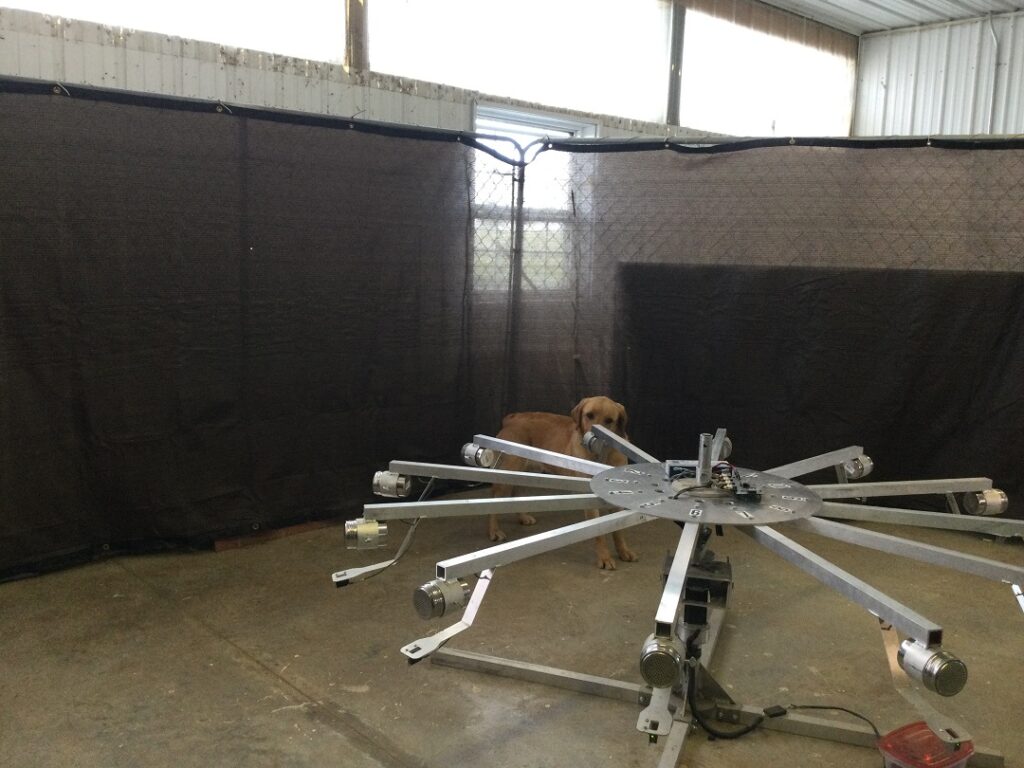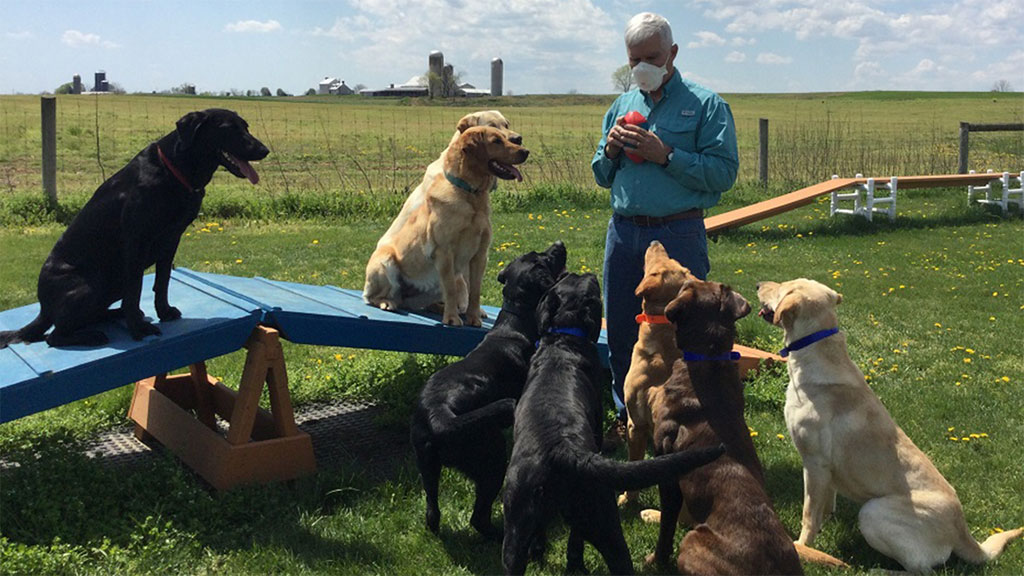Proof-of-concept study to determine if scent-detection working dogs can be trained to detect the odor of COVID-19 based on human sweat.
Scientists at the U.S. Army Combat Capabilities Development Command Chemical Biological Center (DEVCOM CBC) are partnering with the University of Pennsylvania and various canine training facilities to continue research on how canines can aid in the fight against COVID-19 and other chemical biological threats.
A team of researchers led by Dr. Patricia Buckley, supervisory biologist and chief of the Center’s Biochemistry Branch, recently began phase two of this proof-of-concept study to determine if scent-detection working dogs can be trained to detect the odor of COVID-19 based on human sweat.
Center scientists say these dogs are able to detect a COVID-positive person days before a rapid test can. “We’re harnessing that scent-detection capability and figuring out how far we can take their limits of detection,” said Jenna Gadberry, Center research scientist. “So far the levels they have been able to detect have been astounding.”
Funded by the Department of Defense’s Domestic Preparedness Support Initiative, this research is a collaborative effort that includes the Center, University of Pennsylvania’s Penn Vet Working Dog Center and Tactical Directional Canine (TDK9) Systems. Scientists at the Center work together to take on research compliance, communicate with dog trainers, crunch data, and create test plans. The University of Pennsylvania serves as the sample collection hub to set up the clinical trial. The university obtains institutional review board approval to collect the clinical human samples and TDK9 and University of Pennsylvania’s Penn Vet Working Dog Center conduct the actual canine detection training.

In the fall of 2020, the team of collaborators completed phase one of the study which involved collecting human COVID-19 positive and negative urine and saliva specimens. Phase two required volunteer participants to wear a t-shirt overnight and send it to the University of Pennsylvania where the shirt would serve as the training aid sample for the canines to sniff its odor. Participants were required to have an accompanying COVID-19 test to verify whether they were positive or negative for the virus. Though this was a long and tedious process, Center scientists say that it was worth it. “It took longer than we anticipated, but we were fortunate to get lots of wonderful volunteers who offered to help us,” said Dr. Michele Maughan, Center research scientist.
Having collected adequate samples from the shirts, the team will now analyze the data from the t-shirts and put man’s best friend to the test using a Center-developed tool called the Training Aid Delivery Device (TADD). According to Dr. Kelley Evans, Center veterinary medical officer, “The t-shirt study is going to prove if the dogs can detect those volatile organic compounds in sweat and determine if a person is asymptomatic for COVID-19.”
The detection dogs were carefully selected based on a number of criteria, one being how motivated they were to sniff out the COVID-19 odor. According to Pat Nolan, owner and operator of TDK9, they had to find dogs excited and motivated enough to find the volatile organic compound odor but simultaneously focused enough to do the work. Eight dogs were chosen at the beginning of the project and have moved on to phase two. There are seven Labrador retrievers and one Belgian Malinois between the ages of two and seven.
Story adapted from CCDC Chemical Biological Center



